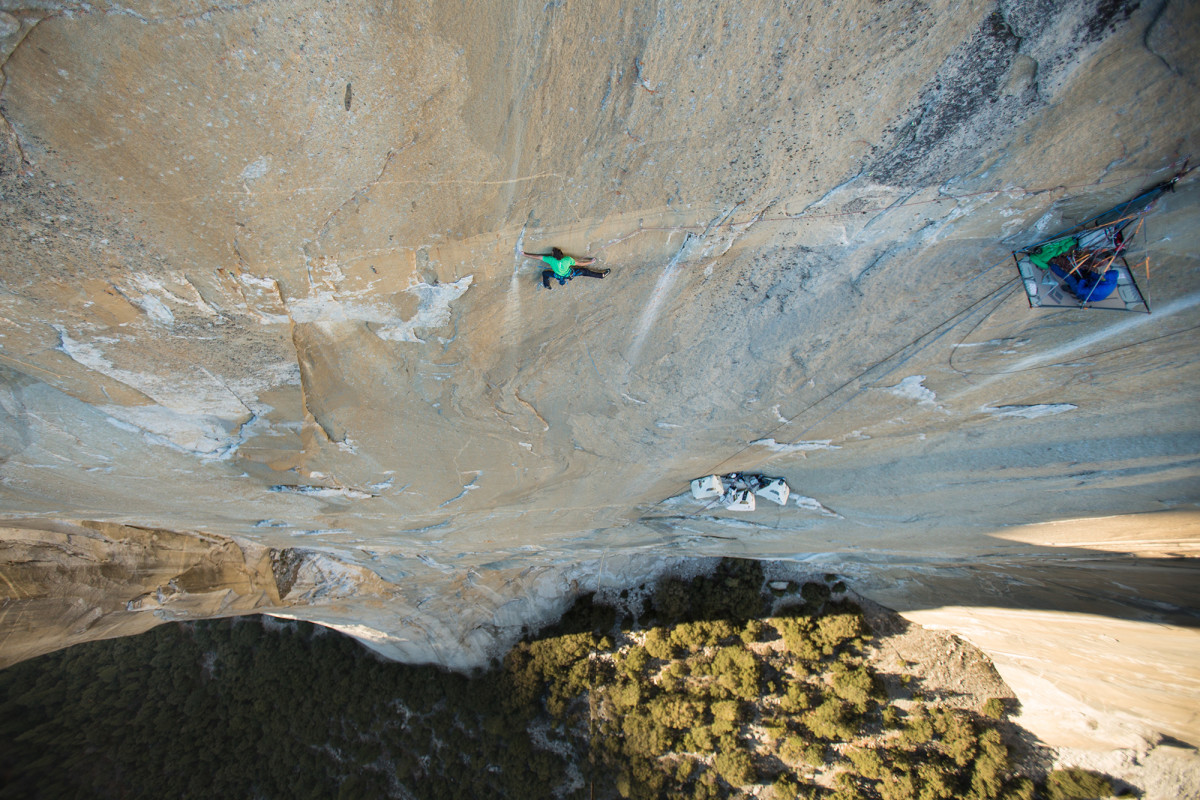Rock climber Tommy Caldwell recalls pushing his gun-toting captor off a cliff

This article was originally published on People.com.
People write memoirs for lots of reasons.
Rock climbing legend Tommy Caldwell wrote his own just-released autobiography – The Push: A Climber’s Journey of Endurance, Risk, and Going Beyond Limits – partly in an effort to better understand his decision to push an Islamic militant, who had taken him hostage, off a 2,000-foot mountain peak in Kyrgyzstan nearly two decades ago.
“That was such a life-changing moment for me,” Caldwell tells PEOPLE. “It’s something I’d grappled with for a long time, but I’d never gone back to try and understand what it meant in my life. Killing somebody was the farthest thing that I, or anyone who knew me, could imagine me doing and it’s the first thing I explored when I started writing this book.”
The 38-year-old married father of two last made headlines in January 2015 after he and climbing partner Kevin Jorgeson spent 19 grueling days inching their way up the razor sharp 3,000-foot granite face of El Capitan’s Dawn Wall in Yosemite National Park.

The feat, widely regarded as the most difficult climbs in history, was made all the more hairy because they only used ropes to catch their falls – not to assist their ascent.
“I picked the biggest, hardest rock face I could imagine and spent six years preparing for it,” Caldwell says. “Some of the sequences of moves took months of rehearsals in order to execute them perfectly, almost like a gymnastics routine.”
Caldwell’s life of adventure started early. Born in Estes Park, Colorado, his father worked as a mountain guide and exposed his young son to “a lot of things that made me into the person I am today – but he possibly took it too far on a few occasions and almost killed me.”
He made his first roped climb at the tender age of 3 with a homemade harness fashioned out of seatbelt webbing. By 17 he had begun winning sport climbing competitions around the country and was soon living “the dirtbag life” of a pro climber, sleeping in his car, showering at YMCAs and living off $50 a month.
By the time he traveled to the Pamir-Alai mountains of Kyrgyzstan in 2000, his obsessive hard work and raw talent had turned him into one of the world’s top big wall free climbers and sport climbers. The expedition soon turned into a nightmare when Caldwell and three others were taken hostage by militant rebels. They spent the six days on the run with the group with very little food or water and dodging bullets being fired at them from the Kyrgy military.
How rock climber Tommy Caldwell re-learned his craft after sawing off his finger
“It was incredibly dire,” says Caldwell. “We’d each lost about 20 pounds and were on the verge of hypothermia.”
His climbing mates had become convinced that their only hope for survival would be to kill their abductors. But Caldwell pushed back, insisting that he “didn’t want to become a murderer,” and tried to convince them that they should “try and wait things out.”
But his attitude changed in a flash on their sixth night of captivity as the group scrambled 2,000 feet up a steep, rocky mountainside with a single gun-toting captor guarding them.
“I suddenly came to the conclusion that it really was our only chance of survival,” says Caldwell. “And once that decision was made, I just did it.”
Moments later, when the 19-year-old militant turned his back on the group, Caldwell sprinted up behind him, grabbed the strap on his gun and sent him careening over the edge of the mountain.
“I heard him hit the ledge below us and watched him bounce into the darkness,” says Caldwell.
Assuming their captor was dead, the group sprinted down the mountain and made their way to a military outpost where they were rescued.
Caldwell later learned that the man had survived. And several years later when one of the climbers visited him in prison, the militant said he “understood” why Caldwell had pushed him off the mountain and “didn’t hold any ill feelings against any of us,” he says.
How to take your workout outdoors: Trail running benefits both the brain and the body
Caldwell faced another trauma a year after returning from the ill-fated expedition when he accidentally chopped off his left index finger with a table saw. “That’s a pretty crucial finger for a climber,” he says with a laugh.
Doctors told him his career was over, but Caldwell stubbornly refused to listen to them and soon “began training with a conviction I hadn’t had before.”
Before long, he realized that “my natural abilities weren’t necessarily brute power and strength. They were more about the ability to endure and not give up.”
The ordeal of losing his finger, he insists, became the “launching pad” for everything he’s accomplished since. “I’ve gone from being a total dirtbag,” he says proudly, “to doing quite well.”
